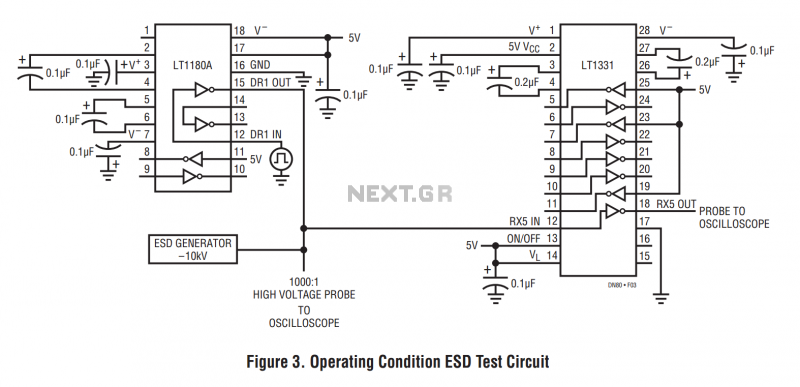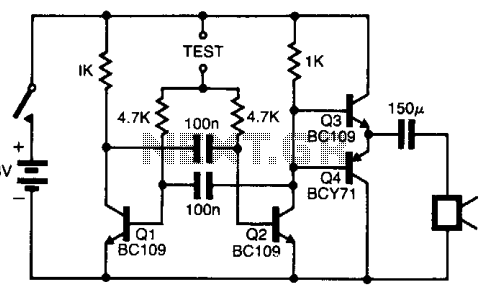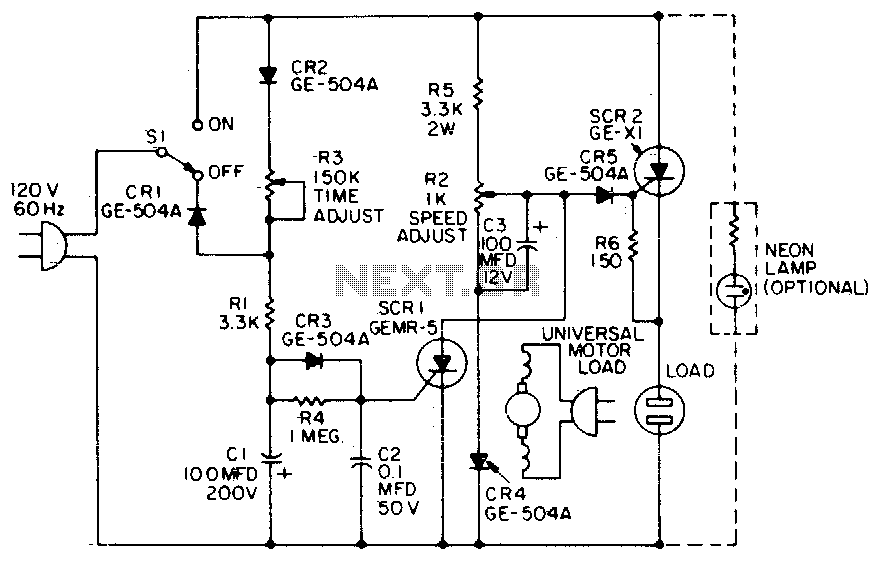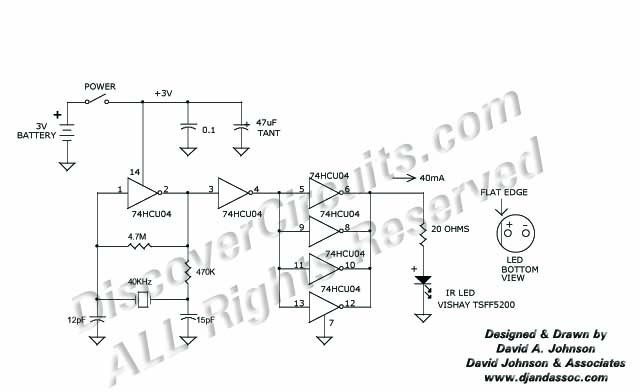
Universal Test Probe
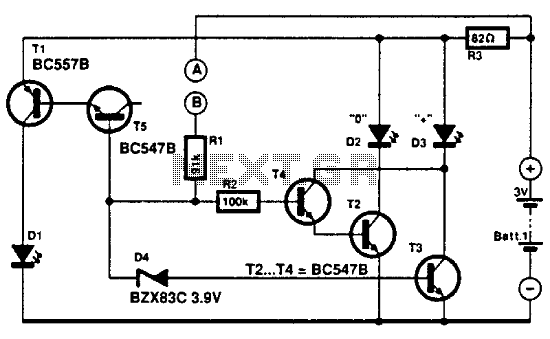
The compact test probe provides rapid measurement of voltage levels at digital gates, fuses, diodes, batteries, and others. It does not provide absolute values but rather gives a good indication of correct operation or otherwise. Measurements are conducted using pins A and B. If the potential difference between A (the reference pin) and the measurement point is 1.9 to 2.0 V, LED D2 will illuminate. If the voltage at the measurement point is less than 1.4 V higher than that at A, LED D3 will light up. Finally, if the potential at the measurement point exceeds 11 V with respect to A, LED D1 will activate. Transistor T5 is utilized as a zener diode. The probe is capable of measuring alternating voltage. The maximum input voltage is highly dependent on the power dissipation allowed in resistor R1. For instance, when R1 is a 0.5-W type, the input voltage can reach up to 200 Vrms. The current drawn by the circuit is contingent upon the number of activated LEDs and does not exceed 10 mA at a supply voltage of 3 V. In quiescent operation, the current is very low (approximately 5 mA), making an on/off switch unnecessary.
The compact test probe circuit is designed for efficient voltage measurement across various electronic components, providing a user-friendly interface through the use of LED indicators. The circuit operates by comparing the voltage at two pins, A (reference) and B (measured), allowing for quick assessment of component functionality. The illumination of LEDs serves as a visual cue for different voltage ranges, enabling technicians to quickly diagnose issues without needing to interpret numerical values.
The use of transistor T5 as a zener diode is a notable feature, allowing for voltage clamping and protection against over-voltage conditions. This configuration ensures that the circuit remains safe even when subjected to high input voltages, particularly when R1 is rated for higher power dissipation. The choice of a 0.5-W resistor allows for a maximum input voltage of 200 Vrms, making the probe suitable for a wide range of applications, including testing in industrial environments.
Additionally, the circuit's design minimizes power consumption, drawing a maximum of 10 mA during operation, which is efficient for battery-powered applications. The quiescent current draw of approximately 5 mA further enhances the usability of the probe, eliminating the need for a manual on/off switch and allowing for continuous readiness without significant battery drain.
Overall, this compact test probe circuit exemplifies a practical solution for quick voltage measurements in various electronic applications, combining functionality, safety, and efficiency in a single device. The compact test probe provides rapid "measurement" of voltage levels at digital gates, fuses, diodes, batteries, and others. It does not provide absolute values, but rather it provides a good indication of correct operation or otherwise. Measurements are carried out with pins A and B. If the potential difference between A (the reference pin) and is 1.9 to 2.0 V, D2 will light. If the voltage at is < 1.4 V higher than that at A, D3 will light. Finally, if the potential at is > 11 V, with respect to that at A, Dl will light. Transistor T5 is used as a zener diode. The probe allows the measurement of alternating voltage. The maximum input voltage is highly dependent on the dissipation allowed in Rl. For example, when this resistor is a 0.5-W type, the input voltage can be as high as 200 Vrms. The current drawn by the circuit depends on the number of lighting LEDs: it is not more than 10 mA at a supply voltage of 3 V.
In quiescent operation, the current is so low (about 5 ) that an on/off switch is not necessary.
The compact test probe circuit is designed for efficient voltage measurement across various electronic components, providing a user-friendly interface through the use of LED indicators. The circuit operates by comparing the voltage at two pins, A (reference) and B (measured), allowing for quick assessment of component functionality. The illumination of LEDs serves as a visual cue for different voltage ranges, enabling technicians to quickly diagnose issues without needing to interpret numerical values.
The use of transistor T5 as a zener diode is a notable feature, allowing for voltage clamping and protection against over-voltage conditions. This configuration ensures that the circuit remains safe even when subjected to high input voltages, particularly when R1 is rated for higher power dissipation. The choice of a 0.5-W resistor allows for a maximum input voltage of 200 Vrms, making the probe suitable for a wide range of applications, including testing in industrial environments.
Additionally, the circuit's design minimizes power consumption, drawing a maximum of 10 mA during operation, which is efficient for battery-powered applications. The quiescent current draw of approximately 5 mA further enhances the usability of the probe, eliminating the need for a manual on/off switch and allowing for continuous readiness without significant battery drain.
Overall, this compact test probe circuit exemplifies a practical solution for quick voltage measurements in various electronic applications, combining functionality, safety, and efficiency in a single device. The compact test probe provides rapid "measurement" of voltage levels at digital gates, fuses, diodes, batteries, and others. It does not provide absolute values, but rather it provides a good indication of correct operation or otherwise. Measurements are carried out with pins A and B. If the potential difference between A (the reference pin) and is 1.9 to 2.0 V, D2 will light. If the voltage at is < 1.4 V higher than that at A, D3 will light. Finally, if the potential at is > 11 V, with respect to that at A, Dl will light. Transistor T5 is used as a zener diode. The probe allows the measurement of alternating voltage. The maximum input voltage is highly dependent on the dissipation allowed in Rl. For example, when this resistor is a 0.5-W type, the input voltage can be as high as 200 Vrms. The current drawn by the circuit depends on the number of lighting LEDs: it is not more than 10 mA at a supply voltage of 3 V.
In quiescent operation, the current is so low (about 5 ) that an on/off switch is not necessary.
